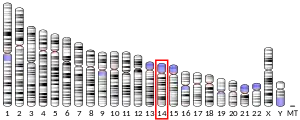| INF2 | |||||||||||||||||||||||||||||||||||||||||||||||||||
|---|---|---|---|---|---|---|---|---|---|---|---|---|---|---|---|---|---|---|---|---|---|---|---|---|---|---|---|---|---|---|---|---|---|---|---|---|---|---|---|---|---|---|---|---|---|---|---|---|---|---|---|
| Identifiers | |||||||||||||||||||||||||||||||||||||||||||||||||||
| Aliases | INF2, C14orf151, C14orf173, CMTDIE, FSGS5, pp9484, inverted formin, FH2 and WH2 domain containing, inverted formin 2 | ||||||||||||||||||||||||||||||||||||||||||||||||||
| External IDs | OMIM: 610982 MGI: 1917685 HomoloGene: 82406 GeneCards: INF2 | ||||||||||||||||||||||||||||||||||||||||||||||||||
| |||||||||||||||||||||||||||||||||||||||||||||||||||
| |||||||||||||||||||||||||||||||||||||||||||||||||||
| |||||||||||||||||||||||||||||||||||||||||||||||||||
| |||||||||||||||||||||||||||||||||||||||||||||||||||
| |||||||||||||||||||||||||||||||||||||||||||||||||||
| Wikidata | |||||||||||||||||||||||||||||||||||||||||||||||||||
| |||||||||||||||||||||||||||||||||||||||||||||||||||
Inverted formin-2 is a protein that in humans is encoded by the INF2 gene.[5][6] It belongs to the protein family called the formins. It has two splice isoforms, CAAX which localizes to the endoplasmic reticulum and non-CAAX which localizes to focal adhesions and the cytoplasm with enrichment at the Golgi.[7][8] INF2 plays a role in mitochondrial fission and dorsal stress fiber formation.[9] INF2 accelerates actin nucleation and elongation by interacting with barbed ends (fast-growing ends) of actin filaments, but also accelerates disassembly of actin through encircling and severing filaments.[10]
Clinical significance
It can be associated with Focal segmental glomerulosclerosis[11] and Charcot-Marie Tooth Disease.[12]
References
- 1 2 3 GRCh38: Ensembl release 89: ENSG00000203485 - Ensembl, May 2017
- 1 2 3 GRCm38: Ensembl release 89: ENSMUSG00000037679 - Ensembl, May 2017
- ↑ "Human PubMed Reference:". National Center for Biotechnology Information, U.S. National Library of Medicine.
- ↑ "Mouse PubMed Reference:". National Center for Biotechnology Information, U.S. National Library of Medicine.
- ↑ Chhabra ES, Higgs HN (September 2006). "INF2 Is a WASP homology 2 motif-containing formin that severs actin filaments and accelerates both polymerization and depolymerization". The Journal of Biological Chemistry. 281 (36): 26754–67. doi:10.1074/jbc.M604666200. PMID 16818491.
- ↑ "Entrez Gene: C14orf173 chromosome 14 open reading frame 173".
- ↑ Ramabhadran V, Korobova F, Rahme GJ, Higgs HN (December 2011). "Splice variant-specific cellular function of the formin INF2 in maintenance of Golgi architecture". Molecular Biology of the Cell. 22 (24): 4822–33. doi:10.1091/mbc.E11-05-0457. PMC 3237625. PMID 21998196.
- ↑ Chhabra ES, Ramabhadran V, Gerber SA, Higgs HN (May 2009). "INF2 is an endoplasmic reticulum-associated formin protein". Journal of Cell Science. 122 (Pt 9): 1430–40. doi:10.1242/jcs.040691. PMC 2721004. PMID 19366733.
- ↑ Korobova F, Ramabhadran V, Higgs HN (January 2013). "An actin-dependent step in mitochondrial fission mediated by the ER-associated formin INF2". Science. 339 (6118): 464–7. Bibcode:2013Sci...339..464K. doi:10.1126/science.1228360. PMC 3843506. PMID 23349293.
- ↑ Gurel PS, Ge P, Grintsevich EE, Shu R, Blanchoin L, Zhou ZH, Reisler E, Higgs HN (January 2014). "INF2-mediated severing through actin filament encirclement and disruption". Current Biology. 24 (2): 156–64. doi:10.1016/j.cub.2013.12.018. PMC 3992431. PMID 24412206.
- ↑ Brown EJ, Schlöndorff JS, Becker DJ, Tsukaguchi H, Tonna SJ, Uscinski AL, Higgs HN, Henderson JM, Pollak MR (January 2010). "Mutations in the formin gene INF2 cause focal segmental glomerulosclerosis". Nature Genetics. 42 (1): 72–6. doi:10.1038/ng.505. PMC 2980844. PMID 20023659.
- ↑ Boyer O, Nevo F, Plaisier E, Funalot B, Gribouval O, Benoit G, Huynh Cong E, Arrondel C, Tête MJ, Montjean R, Richard L, Karras A, Pouteil-Noble C, Balafrej L, Bonnardeaux A, Canaud G, Charasse C, Dantal J, Deschenes G, Deteix P, Dubourg O, Petiot P, Pouthier D, Leguern E, Guiochon-Mantel A, Broutin I, Gubler MC, Saunier S, Ronco P, Vallat JM, Alonso MA, Antignac C, Mollet G (December 2011). "INF2 mutations in Charcot-Marie-Tooth disease with glomerulopathy". The New England Journal of Medicine. 365 (25): 2377–88. doi:10.1056/NEJMoa1109122. hdl:10261/57029. PMID 22187985. S2CID 17208136.
Further reading
- Kimura K, Wakamatsu A, Suzuki Y, Ota T, Nishikawa T, Yamashita R, Yamamoto J, Sekine M, Tsuritani K, Wakaguri H, Ishii S, Sugiyama T, Saito K, Isono Y, Irie R, Kushida N, Yoneyama T, Otsuka R, Kanda K, Yokoi T, Kondo H, Wagatsuma M, Murakawa K, Ishida S, Ishibashi T, Takahashi-Fujii A, Tanase T, Nagai K, Kikuchi H, Nakai K, Isogai T, Sugano S (January 2006). "Diversification of transcriptional modulation: large-scale identification and characterization of putative alternative promoters of human genes". Genome Research. 16 (1): 55–65. doi:10.1101/gr.4039406. PMC 1356129. PMID 16344560.
- Bindschadler M, McGrath JL (October 2004). "Formin' new ideas about actin filament generation". Proceedings of the National Academy of Sciences of the United States of America. 101 (41): 14685–6. Bibcode:2004PNAS..10114685B. doi:10.1073/pnas.0406317101. PMC 522045. PMID 15466701.
- Fu GK, Wang JT, Yang J, Au-Young J, Stuve LL (July 2004). "Circular rapid amplification of cDNA ends for high-throughput extension cloning of partial genes". Genomics. 84 (1): 205–10. doi:10.1016/j.ygeno.2004.01.011. PMID 15203218.
- Gevaert K, Goethals M, Martens L, Van Damme J, Staes A, Thomas GR, Vandekerckhove J (May 2003). "Exploring proteomes and analyzing protein processing by mass spectrometric identification of sorted N-terminal peptides". Nature Biotechnology. 21 (5): 566–9. doi:10.1038/nbt810. PMID 12665801. S2CID 23783563.
- Suzuki Y, Yoshitomo-Nakagawa K, Maruyama K, Suyama A, Sugano S (October 1997). "Construction and characterization of a full length-enriched and a 5'-end-enriched cDNA library". Gene. 200 (1–2): 149–56. doi:10.1016/S0378-1119(97)00411-3. PMID 9373149.
- Maruyama K, Sugano S (January 1994). "Oligo-capping: a simple method to replace the cap structure of eukaryotic mRNAs with oligoribonucleotides". Gene. 138 (1–2): 171–4. doi:10.1016/0378-1119(94)90802-8. PMID 8125298.
This article is issued from Wikipedia. The text is licensed under Creative Commons - Attribution - Sharealike. Additional terms may apply for the media files.




